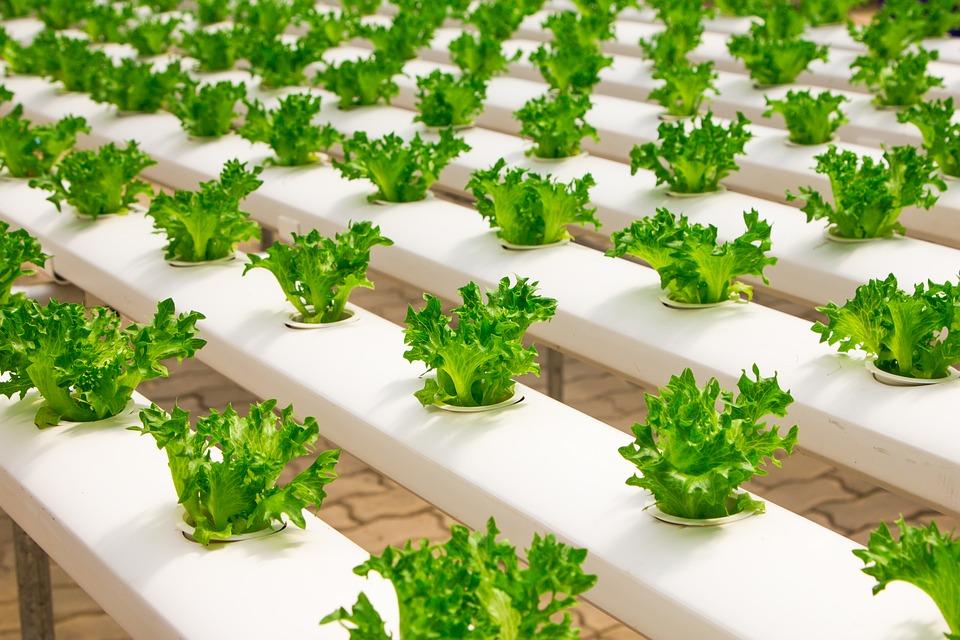 Loading... Please wait...
Loading... Please wait...Save Money. Grow Your Own!
Fast Plain Box Shipping.
We ship to the US & Canada.
Grow Your Own!
Essentials To Know About The Hydroponic System
Posted on 13th Jan 2020

Hydroponics refers to the process of growing plants through mineral nutrients instead of regular soil.
Since hydroponic systems usually do not require soil, they need other growing nutrients including sand, perlite, rockwool, gravel, etc. Several 3D CAD design services are available to model effective and affordable hydroponic systems.
Through a hydroponic system, you can grow various varieties of fresh produce including tomatoes, lettuce, fresh herbs, flowers and a lot more.
Through hydroponic systems, roots are directly inserted into an aerated mineral nutrient solution.
The growing medium used in this method has no control over the nutrition of your produce. Therefore, you have complete command over the nutritional value of your plants.
Unlike conventional gardening methods, hydroponic systems do not have much tolerance for any inaccuracy or mistakes. Here, you have to work with precision and accuracy as any fault or error can lead to severe damages.
Types of Hydroponic Systems
Presently, there are two types of hydroponic systems available in the market. They can be either closed or open hydroponic systems.
In closed hydroponic systems, the same mineral nutrient solution can be used multiple times and is evaluated and fixed on a weekly basis.
In open systems, a new mineral nutrient solution is used each time via drip systems.
Following are some popular hydroponic systems used by both new and pro gardeners:
Deep Water Culture Hydroponic Systems
Here, plants are immersed into an oxygen based nutrient solution.
Wick Systems
In this type of hydroponic system, several wicks are used to travel water from the base to the reservoir and the roots. This is the most popular option for growing herbs and other leafy vegetables.
Ebb and Flow
Ebb and Flow is the most economical hydroponic system where the growing plant is submerged in mineral nutrient solution. The excessive solution is then drained out. This method is mostly preferred for potted plants.
NFT Systems
This system is similar to the flood and drain method where the same nutrient solution is used on the roots which leads to the creation of a thin film around the roots and aids in the aeration process.
Buying a Hydroponic System
Buying your own hydroponic system can be an exciting and fun process, however, it’s important to do some research and planning to buy the perfect hydroponic system for your needs.
There are various hydroponic systems available in the market that can be distinguished on the basis of their features and the types of plants you are planning to grow.
Therefore, it is extremely important to consider the following factors before investing in a hydroponic system:
Selection of Plants to Grow
Firstly, you need to decide what plants you are planning to grow as different types of plants require different hydroponic techniques.
For instance, you cannot grow tomatoes through a Nutrient Film Technique.
By figuring out the plants that you need to grow beforehand, you can save a lot of time and effort as you won't have to purchase another hydroponic system later on.
Budget for Hydroponic System
You also need to consider your budget before investing in a hydroponic system. This will help you to save time and look for only those models that are available within your budget.
Gardening Space for Hydroponic System
Today, there are various hydroponic systems available in the market that can suit the needs and budgets of different buyers.
Apart from the budget, you need to consider the total gardening space available as it will help you to choose a hydroponic system of appropriate size and weight.
Fortunately, there are many hydroponic systems available online that can be easily installed in less spacious areas. Therefore, whether you have a spacious or smaller garden space available, it wouldn't be a problem to purchase a hydroponic system as per your gardening space available.
Water and Drainage Systems
Moreover, you also need to consider availability of water and the drainage system of your garden. The system follows a certain procedure. You are required to allow the water to drain from the reservoir of the hydroponic system in order to get it refilled. Regular drainage of the system should be maintained in order to assist in setting up and maintaining the system in the available garden space.
Performance and Scalability of Hydroponic Systems
The performance and scalability of your hydroponic system can also vary on the basis of its size. Therefore, it is crucial to figure the amount of plants you are planning to grow and invest in a hydroponic system of appropriate size.
Based upon their size and design, some hydroponic systems involve more maintenance expenditures than others. Therefore, if you cannot invest much time for monitoring your system, you can consider buying those automated hydroponic systems that are designed to auto adjust the temperatures, pH levels, etc.
